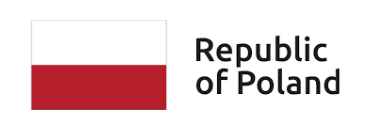Weekly research seminar
Organizers
- dr Oskar Skibski
- dr hab. Piotr Skowron
Information
Thursdays, 10:15 a.m. , room: 4050Research fields
List of talks
-
Oct. 12, 2017, 10:15 a.m.
Leonie Baumann (University of Cambridge)
Identifying the best agent in a network
This paper develops a mechanism for a principal to assign a prize to the most valuable agent from a set of heterogeneously valued agents in a network. The principal does not know the value of …
-
Oct. 5, 2017, 10:15 a.m.
Tomasz Janus (Instytut Informatyki UW)
On Strong Equilibria and Improvement Dynamics in Network Creation Games
We study strong equilibria in network creation games. These form a classical and well-studied class of games where a set of players form a network by buying edges to their neighbors at a cost of …
-
June 22, 2017, 10:15 a.m.
Krzysztof Puchta (Instytut Informatyki, UW)
A cooperative solution for the three-nation problem of exploitation of the southern bluefin tuna
W trakcie seminarium zaprezentowany zostanie artykuł "A Cooperative Solution for the Three-Nation Problem of Exploitation of the Southern Bluefin Tuna" autorstwa J. Krawczyka i B. Tolwinskiego W pracy: 1.) Rozwiązano problem gry kooperacyjnej. Do dalszych …
-
May 18, 2017, 10:15 a.m.
Jadwiga Sosnowska (Instytut Informatyki, UW)
Attachment Centrality for Weighted Graphs
Measuring how central nodes are in terms of connecting a network has recently received increasing attention in the literature and a few dedicated centrality measures have been proposed. One of them is the Attachment Centrality …
-
May 11, 2017, 10:15 a.m.
Oskar Skibski (Instytut Informatyki, UW)
Axiomatic Characterization of Distance-based Centralities
I will present our initial results concerning the characterization of the distance-based centralities. First, we characterize distance based centralities using Sabidussi's operations of adding and moving edges. Then, by adding one axiom we obtain a …
-
April 20, 2017, 10:15 a.m.
Tomasz Michalak (Instytut Informatyki, UW)
Strategic Social Network Analysis
How can individuals and communities protect their privacy against graph-theoretic network analysis tools? How do criminals or terrorists organizations evade detection by such tools? Under which conditions can these tools be made strategy proof? These …
-
April 6, 2017, 10:15 a.m.
Marcin Waniek (Instytut Informatyki, UW)
On the Construction of Covert Networks
Centrality measures are widely used to identify leaders of covert networks. We study how a group of such leaders can avoid being detected. In more detail, we study the hardness of modifying the network in …
-
March 30, 2017, 10:15 a.m.
Marcin Dziubiński (Instytut Informatyki, UW)
Spectrum of equilibria in Colonel Blotto game
We study Nash equilibria of a symmetric Colonel Blotto game. In this game two players, with N≥1 units of resources each, distribute their resources simultaneously across K≥2 battlefields. We introduce a characteristic of equilibria in …
-
March 9, 2017, 10:15 a.m.
Oskar Skibski (Instytut Informatyki, UW)
Axiomatic Characterization of Game-Theoretic Network Centralities
In this work, we focus on the game-theoretic approach to centrality analysis. While various centrality indices have been proposed based on this approach, it is still unknown what distinguishes this family of indices from the …
-
Jan. 12, 2017, 10:15 a.m.
Marcin Dziubiński (Instytut Informatyki, UW)
Strategy of Conquest
Players are endowed with resources. A player can engage in conflict with others to enlarge his resources. The set of potential conflicts is defined by a contiguity network. Players are farsighted and aim to maximize …
-
Dec. 15, 2016, 10:15 a.m.
Piotr Dworczak (Stanford University)
Mechanism Design with Aftermarkets
I study a model of mechanism design in which the mechanism is followed by an aftermarket, that is, a post-mechanism game played between the agent and other market participants. The designer has preferences that depend …
-
Dec. 1, 2016, 10:15 a.m.
Piotr Skowron (University of Oxford)
Multiwinner Election Rules: Axioms and Applications
We consider multiwinner election rules and discuss some of their properties. In particular we discuss the concept of proportional representation of multiwinner election rules. Informally, proportional representation requires that the extent to which a particular …
-
Oct. 27, 2016, 10:15 a.m.
Marcin Waniek (Instytut Informatyki UW)
On Hiding Communities and Evading Link Prediction in Social Networks
Community detection and link prediction are two of the main research problems in social network analysis. While various private and public institutions are interested in identifying communities, it raises serious privacy issues as well as …
-
Oct. 13, 2016, 10:15 a.m.
Takamasa Suzuki (Kyushu University)
Efficient assignment mechanism with endowments and distributional constraints
We consider an assignment problem of multiple types goods to agents, where each type of a good has multiple copies (e.g., multiple seats of a school). Each agent is endowed with a good. Some distributional …
-
May 19, 2016, 12:15 p.m.
Oskar Skibski (Wydział MIM UW)
k-Coalitional Cooperative Games
In most previous models of coalition structure generation, it is assumed that agents may partition themselves into any coalition structure. In practice, however, there may be physical and organizational constraints that limit the number of …
 You are not logged in |
You are not logged in |
















